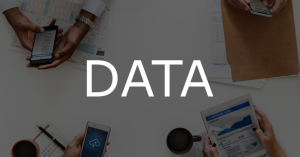Many e-commerce merchants think SaaS chargebacks are unwinnable. But with the proven hacks in this article, you can comfortably stop SaaS chargebacks from ruining your company.
Three key indices drive the new wave of the Software-as-a-Service (SaaS) revolution: accessibility, functionality, and versatility.
The promise of agile delivery and cost-efficiency makes SaaS a choice business model for entrepreneurs in various verticals. And with the uptick in digital innovation throwing a curveball at businesses regularly, SaaS solutions offer the needed lifeline for companies that cannot readily design and deploy such tools.
Estimates from Gartner put the service-based cloud application economy at a $ 143.7 billion market cap by 2022.
But less exciting is the available data indicating that SaaS companies face a higher dose of chargeback fraud. Industry analysis shows that customers dispute digital transactions 12 times more often than in-store purchases.
Consequently, most entrepreneurs have written off chargebacks as a cost of doing business as a SaaS. Once a customer files a chargeback, your chances of winning are infinitesimally slim. And even when you win the chargeback, you often expend ungodly amounts of resources that would’ve been channeled towards taking your SaaS company to the next level. Plus, you still lose money due to the non-negotiable chargeback fees.
But there’s a bright side. And in this article, I’ll share valuable tips and strategies to mitigate SaaS chargebacks adequately.
How to minimize Saas chargebacks: Advice for smart and savvy digital entrepreneurs

- stevepb / Pixabay
Before we dive into the tricks and tips for mitigating SaaS chargebacks, below is a case study highlighting the need for a well-thought-out dispute management process. Pete writes thus:
“I run a subscription-based SaaS business, and we accept payments through both PayPal and Credit/Debit cards. Of the hundreds of transactions we’ve processed since the beginning, we’ve only had about two chargebacks, and they were the result of genuine fraud.
Today I checked my email to see one of our customers has processed chargebacks against four months worth of subscription fees, claiming they canceled, but we continued to charge them. On closer inspection, they NEVER canceled and now want their money back.”
With that case study on the back burner, here are some chargeback mitigation best practices you should know:
#1: Provide clear payment policy and Service Terms
It would help if you always informed users about payments before you charge them.
And you should include details about your payment schedules and explicit payment policy. You should also have these details clearly shown on your pricing page and Terms of Service.
Equally important is the fact that setting up reminders before billing users can save you potential SaaS chargebacks. Reminders will indeed cause more people to cancel. Most SaaS businesses make money from users forgetting about their subscriptions. And any email reminding them of that arrangement is an opportunity for them to reconsider their interest in your offering.
However, when you take stock of the risks and implications of losing your merchant account and other related costs of dealing with chargebacks, you realize that such smart billing techniques might not be so smart after all. Send your users a notification of the charge before and after you successfully billed them.
That brings us to the next point on how to mitigate SaaS chargebacks.
#2: Provide a thorough product description and relevant order details
Describing a SaaS product in a language anyone can easily understand is easier said than done for many entrepreneurs. Yet, it would be best if you put in the effort to craft an excellent product description that doesn’t mislead your subscribers.
A good production description helps to mitigate ambiguity and any expectation gap. It details what your product does, how it works, and any necessary information the user might need to know.
You don’t want someone onboarding your service and wondering, “but I thought they said thus and thus.” Provide pictures, offer demos, or give freemium packages so that prospective users can quickly take a swing at your offering and make up their minds on whether or not to onboard it.
Why is that important, you ask? There’s no defense against a product that does what you said it’ll do. Many SaaS chargebacks happen when customers feel their payments are unjustified or wasted.
If your client is happy with your product, the chances are that your SaaS chargeback-to-sales ratio won’t spike through the roof like many others.
That’s speaking of legitimate SaaS chargebacks, anyway. Fraudulent buyers will always force your hand regardless of what you do.
That said, you should also ensure your transaction descriptor isn’t letting you down. Per industry standards, transaction descriptors explain a specific payment to the buyer. A good order description helps a payor identify the transaction on their bank statement. Not guessing or wondering what the billing was for, which often results in SaaS chargebacks.
Ideally, your order description should have your company name, website address, company location, contact information, and other relevant information. Even if you choose to include code numbers in the transaction descriptor for accounting purposes, make it easy for your users to understand the charge in their billing records.
#3: Don’t be vulnerable to online fraud.
A study on the actual cost of internet fraud in 2020 found that e-commerce businesses lose $ 3.36 per every $ 1 fraud incident.
That aggregates to a $ 33 billion deficit owing to online fraud—statistically, losses from chargeback abuse to e-commerce vendors average at about 20% year-on-year growth.
If you think that’s a tremendous insight, there is more. A recent study conducted by Fraud.net noted that friendly fraud occurred 50% more often than criminal attacks. The study further highlights that “ a 1% reduction in legitimate sales resulting from friendly fraud could translate to a 25% reduction in overall profits.”
Avoid unnecessary SaaS chargeback due to inadequate security infrastructure. Implement requisite digital payment security wireframes such as Address Verification Service (AVS), Card Verification Value (CVV) Verification, device fingerprinting, fraud scoring, velocity Limits, proxy piercing, among others. Growing your business is already challenging as it is. Keeping your money shouldn’t.
#4: Be proactive and responsive in addressing disputes.
Make it easy for your customer to locate your company’s contact information. And be responsive when they need human support.
How you address a user’s complaint about your software is vital. When they are happy about your service, they’ll likely not resort to disputes to get remediation. A happy customer translated to minor SaaS chargeback incidents and increased revenues.
You should have your email and phone number at the top or button of your page, not just on the contact page.
Further, if you don’t have a well-written refund policy, you will also run into SaaS chargeback challenges. Experienced e-commerce merchants agree that a refund policy is the choicest way to reduce chargebacks in your digital commerce.
Ensure that your refund policy isn’t making you leave money on the table. And neither should be an excuse to unnecessarily hold onto cash even when the customer has a legitimate case. You can definitely hit back at unmerited SaaS chargebacks with your refund policy, but you have to do the needful when there’s merit to refund the user. You can offer a partial refund or strike some win-win deals with the customer.
When dealing with any SaaS chargeback, you should consider balancing the tension between maintaining your goodwill with the customer and losing the revenue. Can you afford to have an angry customer writing negative reviews about your store? Is the payment worth the negative press you might stir up through a determinate action in fighting the chargeback?
The Cash-22 with that, though, is that your account provider can shut you down if you breach the established excessive chargeback threshold.
Think critically about your SaaS chargeback mitigation strategy
The rule of thumb for merchants is to ALWAYS respond to chargebacks. The actual cost of chargebacks to merchants is far beyond the transaction cost or chargeback fee.
If you are in a similar situation as Pete, whose case we highlighted above, you should gather all the documentation on the transaction for representment. Sadly, even though you can dispute the chargeback and send all required documentation, the bank makes the ultimate decision. And being that you sold a digital product, your chances of winning the chargeback are minimal.
Thankfully, there’s a pro tip to navigating that challenge. Softwares such as Chargeflow.io’s industry-first disputes and chargeback automation service help merchants to stop disputes before they escalate to become chargebacks. The platform leverages Machine Learning and Artificial Intelligence to give you detailed information on each transaction. With that, you can always make the right decision on customers’ orders and have reliable data needed to resolve any dispute.
Digital & Social Articles on Business 2 Community
(14)





